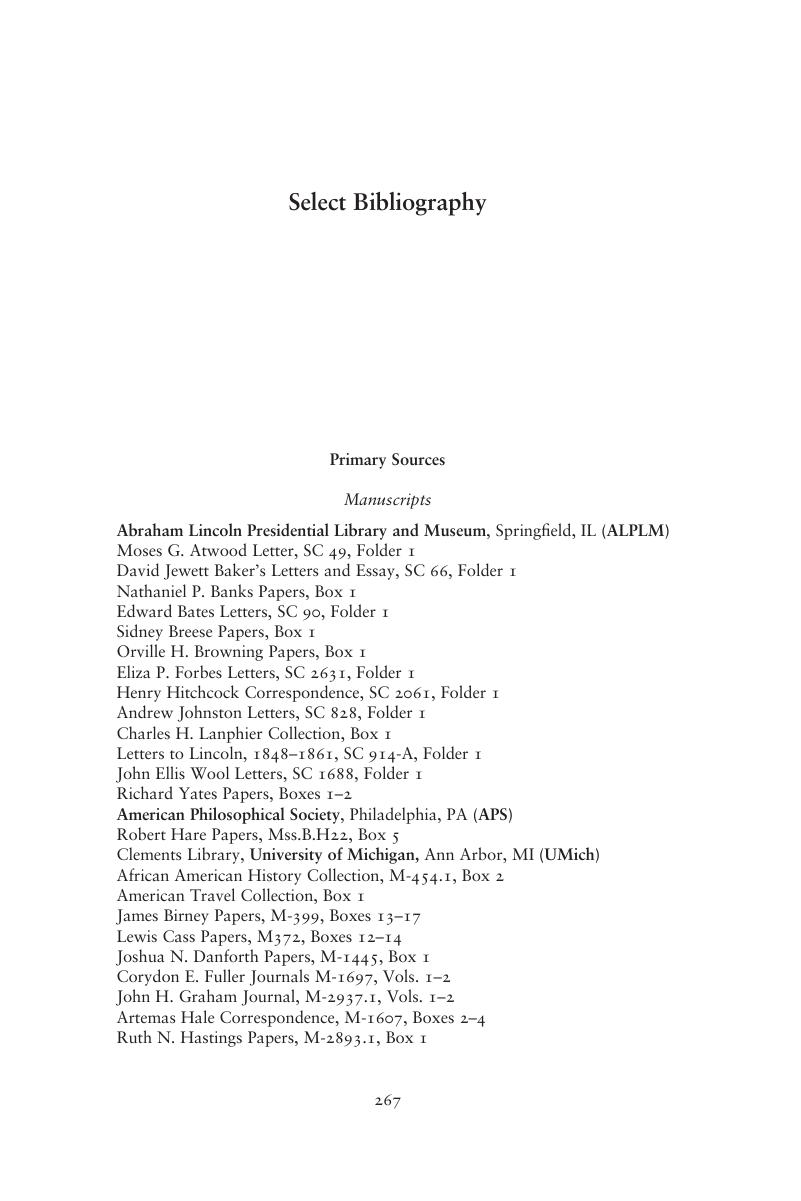Book contents
- The Constitutional Origins of the American Civil War
- Cambridge Historical Studies in American Law and Society
- The Constitutional Origins of the American Civil War
- Copyright page
- Dedication
- Contents
- Figures
- Tables
- Preface
- Acknowledgments
- Abbreviations
- Terms
- 1 The Original Intent of the Slaveholding Founders
- 2 Two Constitutional Wrongs Did Not Guarantee a Constitutional Right
- 3 The Tyranny of the Northern Majority
- 4 The Spirit of 1787
- 5 The Constitutional Right of Secession
- Epilogue
- Charts Showing the Authors of Manuscript Sources Cited
- Charts Showing the South’s Minority Status in the Federal Government
- Select Bibliography
- Index
- References
Select Bibliography
Published online by Cambridge University Press: 28 June 2019
- The Constitutional Origins of the American Civil War
- Cambridge Historical Studies in American Law and Society
- The Constitutional Origins of the American Civil War
- Copyright page
- Dedication
- Contents
- Figures
- Tables
- Preface
- Acknowledgments
- Abbreviations
- Terms
- 1 The Original Intent of the Slaveholding Founders
- 2 Two Constitutional Wrongs Did Not Guarantee a Constitutional Right
- 3 The Tyranny of the Northern Majority
- 4 The Spirit of 1787
- 5 The Constitutional Right of Secession
- Epilogue
- Charts Showing the Authors of Manuscript Sources Cited
- Charts Showing the South’s Minority Status in the Federal Government
- Select Bibliography
- Index
- References
Summary

- Type
- Chapter
- Information
- The Constitutional Origins of the American Civil War , pp. 267 - 284Publisher: Cambridge University PressPrint publication year: 2019



